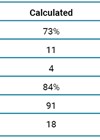This population based retrospective cohort study evaluates the incidence of ocular myasthenia gravis (OMG) as well as risk factors for transformation to generalised myasthenia gravis (GMG). Sixty-five patients (40 male and 25 female) with newly diagnosed with myasthenia gravis (MG) between Jan 1990 and December 2017 were identified and followed up for a median of 91 months (17-333 months). Fifty-one patients (78%) had ocular symptoms at diagnosis and 60 (90%) had ocular symptoms at some point of the disease. Thirty-three (51%) patients presented with OMG, providing an incidence of 1.13 cases per 100,000 per year. Of these patients, 18 (53%) converted to GMG at a median of 13 months. Acetylcholine receptor antibody seropositivity increased the risk of generalising with 67% of seropositive patients converting to GMG at five years compared with 11% of those that were seronegative. Single-fibre electromyography (sfEMG) positivity was also associated with an increased risk of conversion, with 77% of those with a positive SfEMG converting to GMG at five years compared with18% of patients who had a negative sfEMG. No other risk factors reviewed including thymoma, tensilon testing or immunosuppressive treatment significantly influenced the conversion to GMG. This study is the first of its kind focusing on OMG, however, the numbers involved are very small. Further studies with larger patient numbers, a larger geographic area and more diverse population are required to investigate any risk factors for conversion to GMG further.




